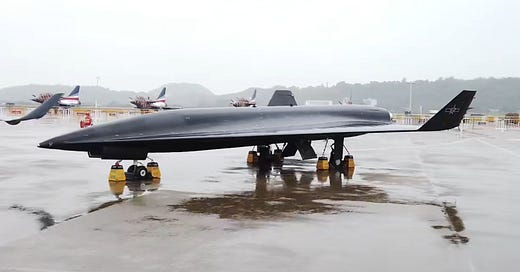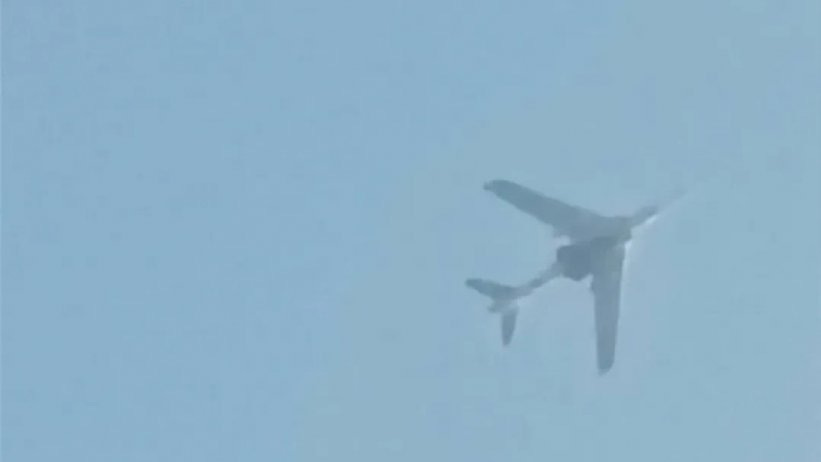We seem to have spotted China’s supersonic drone in flight. A grainy photo that circulated online this week depicts what appears to be an AVIC WZ-8 drone mounted to the belly of its mothership, a modified Xian H-6 bomber.
The arrowhead unmanned aerial vehicle made its first public appearance at a rehearsal for a national celebration in Beijing in September 2019. The UAV’s long, narrow fuselage and wings—ideal for supersonic flight—gave away its primary role. The WZ-8 was a recon craft.
The rocket-propelled WZ-8 “would be expected to play a key role should there be a conflict with U.S. aircraft carrier strike groups in the South China Sea or western Pacific,” South China Morning Post reported at the time.
The Pentagon warned, as long ago as 2013, that "the acquisition and development of longer-range unmanned aerial vehicles ... and unmanned combat aerial vehicles, will increase China’s ability to conduct long-range reconnaissance and strike operations.”
Observers noted the WZ-8’s outward similarity to a much older American drone: the Lockheed D-21. The big difference between the types is their respective missions.
The U.S. Air Force and U.S. Central Intelligence Agency developed the Mach-three D-21 in the 1960s to spy on China’s nascent nuclear-weapons program. The speedy, camera-equipped American drones flew four recon missions over two years starting in 1969. After that, spy satellites and U.S.-Chinese rapprochement rendered the D-21 program redundant.
According to Chinese media, the WZ-8’s main role is to conduct surveillance and reconnaissance in support of the Chinese People’s Liberation Army Rocket Force’s anti-ship brigades.
Fitted with unspecified sensors, possibly cameras and a radar, the drones could find and fix U.S. Navy aircraft carriers for the PLARF’s DF-21D and DF-26 long-range anti-ship ballistic missiles to strike—and then assess the damage following each attack.
Zhou Chenming, a Beijing-based commentator, told South China Morning Post the WZ-8’s high speed—potentially Mach three or faster—should help it to penetrate a carrier battle group’s defenses. It doesn’t hurt that the WZ-8’s ceiling might be as high as 160,000 feet, placing it beyond the reach of many air-defense systems.
The WZ-8 like the D-21 launches from mid-air, and thus requires a special mothership. For the D-21, that was the Lockheed M-21, a variant of the same basic design that also evolved into the USAF’s Mach-three SR-71 spy plane.
The WZ-8’s mothership is more prosaic—and more vulnerable: the H-6MW variant of the basic H-6 medium bomber. The H-6MWs and WZ-8s reportedly belong to a bomber division in Luan, in eastern China.
The H-6MW differs from other H-6 variants mainly in having pylons and clamps on its belly for clutching a WZ-8 before launch. The H-6 mothership also has a dorsal antenna for satellite communications.
We don’t know for sure how the WZ-8 recovers following a mission. It has landing gear, so maybe it returns to base like any conventional aircraft does.
The D-21 was, for its part, a single-use vehicle. After a mission, it dropped its film canister. The canister descended under a parachute as a special Lockheed JC-130 cargo plane tried to snatch it from the air. The D-21 meanwhile self-destructed.
Read more:







